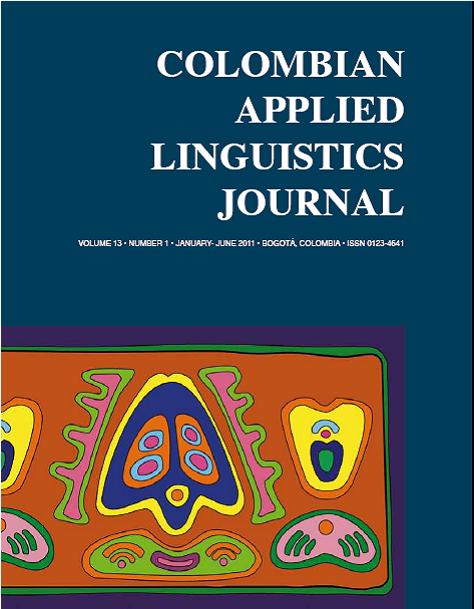DOI:
https://doi.org/10.14483/22487085.2945Published:
2011-01-01Issue:
Vol 13, No 1 (2011) January-JuneSection:
Pedagogical InnovationsLa multimedia como herramienta para el aprendizaje autónomo del vocabulario del inglés por parte de los niños
Multimedia as an autonomous learning tool of English vocabulary by children
Keywords:
multimedia, nuevas tecnologías, computador, aprendizaje, inglés, niños, vocabulario, pronunciación (es).Keywords:
multimedia, new technologies, computer, learning, English, children, vocabulary, pronunciation (en).Downloads
Abstract (es)
Este artículo describe una Investigación pedagógica realizada en la Universidad del Chocó orientada a comprobar el grado de efectividad de la multimedia como herramienta para el aprendizaje autónomo del vocabulario del inglés por parte de los niños. El problema a investigar se planteó en términos de los interrogantes: ¿qué tan efectivo es el aprendizaje de una lengua extranjera a través de la tecnología?, ¿qué tanto pueden aprender los niños chocoanos por sí solos el vocabulario del inglés por medio de la multimedia? Los hallazgos encontrados conirman varias hipótesis sobre el aprendizaje del vocabulario y la pronunciación y permiten concluir que la multimedia es eicaz como herramienta didáctica para el aprendizaje autónomo de la lengua extranjera.
Abstract (en)
This paper describes a pedagogical intervention carried out at the University of Chocó aimed at determining the degree of effectiveness of multimedia technology as a tool for independent learning of English vocabulary by children. The research problem was stated in terms of the questions: ¿how effective is foreign language learning through technology?, ¿how much can children in Chocó learn English vocabulary by themselves through multimedia? The indings conirm several hypotheses about the learning of vocabulary and pronunciation, and leads the researchers to conclude that multimedia is effective as a teaching tool for autonomous learning of foreign languages.
References
Bongaerts, T. et al. (1997). Age and ultimate attainment in the pronunciation of a foreign language. Studies in Second Language Acquisition, 19/4: 447-465.
Casado y García (2000). Consideraciones didácticas sobre la enseñanza de lenguas extranjeras asistida por ordenador. Didáctica (Lengua y Literatura). 12: 67-89
Henning, G. (1973) Remembering foreign language vocabulary: Acoustic and semantic parameters. Language Learning, 23: 185-196
Krashen, S. (1981), Second Language Acquisition and Second Language Learning. Oxford, Pergamon.
Lenneberg, E.H. (1967). Biological Foundations of Language. New York, Wiley
Radford, A. et al (1999). Linguistics: An Introduction. Cambridge: Cambridge University Press. Regil, L.: Laberintos digitales. Artículo publicado en Internet, recuperado de la página http:/ webcache.googleusercontent.comsearch?q=cache:TMwC8DGJDzcJ:www.mexicandesign.com/revista/hipermedia.htm+hipermedia+y+pensamiento&cd=10&hl=es&ct=clnk&gl=co (25.10.2010)
Siemens, G. (2004). Conectivismo: Una teoría de aprendizaje para la era digital, Publicado bajo Licencia Creative Commons 2.5
Steinberg, D. (1996). An Introduction to Psycholingusitics. London and New York: Longman.
How to Cite
APA
ACM
ACS
ABNT
Chicago
Harvard
IEEE
MLA
Turabian
Vancouver
Download Citation
Metrics
License
This work is licensed under a Creative Commons Attribution-NonCommercial-NoDerivatives 4.0 International License.
Attribution — You must give appropriate credit, provide a link to the license, and indicate if changes were made. You may do so in any reasonable manner, but not in any way that suggests the licensor endorses you or your use.
NonCommercial — You may not use the material for commercial purposes.
NoDerivatives — If you remix, transform, or build upon the material, you may not distribute the modified material.
The journal allow the author(s) to hold the copyright without restrictions. Also, The Colombian Apllied Linguistics Journal will allow the author(s) to retain publishing rights without restrictions.









